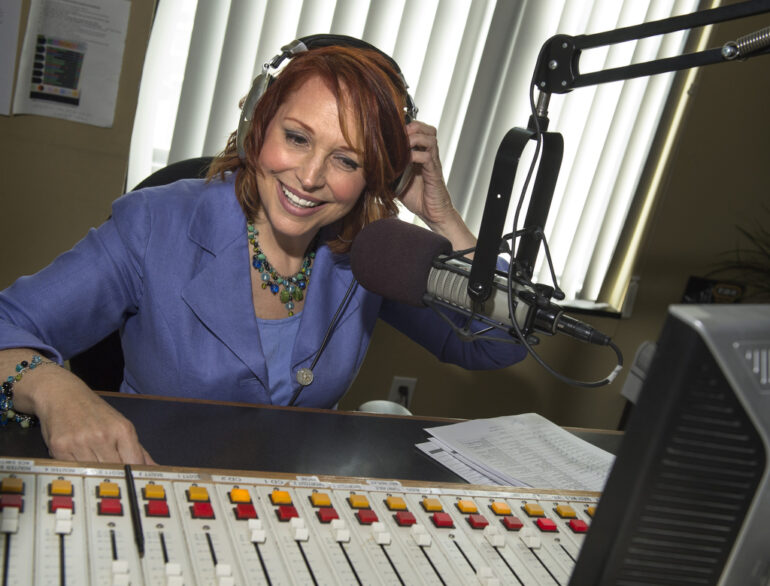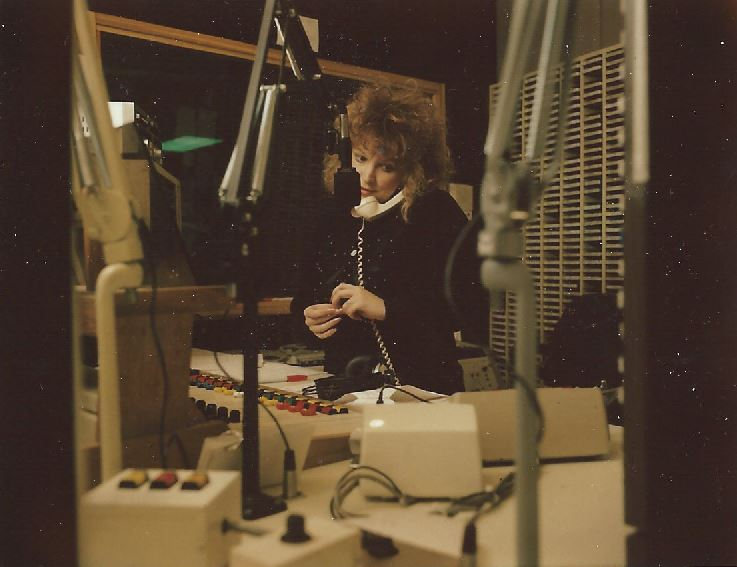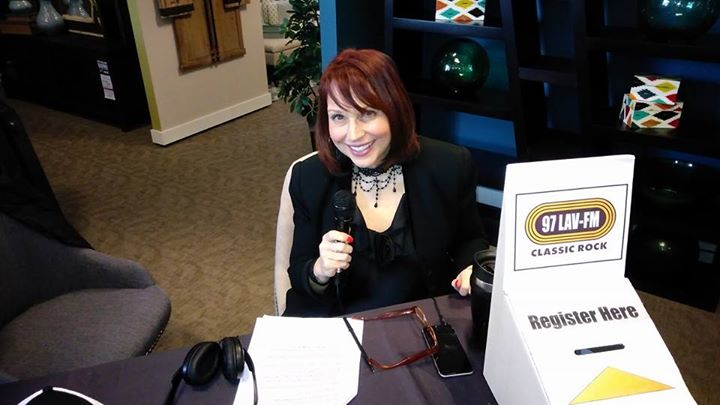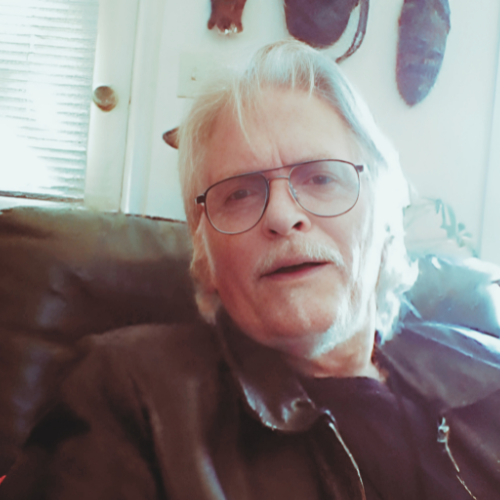-
 play_arrow
play_arrow
AircheckRadio Aircheck Radio
-
 play_arrow
play_arrow
Quid pro bros Vox
-
 play_arrow
play_arrow
Miami-Fort Lauderdale Barry Wright
Kim Carson: A Trailblazing Voice in Michigan Radio
Four Decades of Breaking Barriers and Building Connections Across the Midwest Airwaves
By The Editorial Staff

In the rich tapestry of Michigan radio history, few voices resonate as powerfully or as enduringly as that of Kim Carson. Born Sherie Weil in Detroit and raised not far from the now-famous 8 Mile Road, Carson has spent more than four decades building a broadcasting career that has not only entertained millions but has broken down barriers for women in an industry that was overwhelmingly male when she first stepped behind a microphone. From her groundbreaking role as the first full-time female air personality at Detroit’s legendary WDRQ to her current morning show presence in Kalamazoo, Carson’s journey represents both personal triumph and the evolution of radio itself through one of its most transformative eras.
Carson’s career is distinguished not just by its longevity but by its breadth and impact across multiple markets and formats. She has worked at some of the most respected stations in Michigan, Ohio, and beyond, including WDRQ, WCZY, WCSX, WYCD, WLAV, and WVFM, among many others. Along the way, she earned the Detroit Free Press award for “Best Nighttime Radio Personality” and claimed first place in the Detroit Celebrity Grand Prix, cementing her status as both a broadcasting professional and a beloved community figure. Her ability to connect authentically with listeners, whether discussing the day’s news, introducing the latest hit song, or sharing personal insights about life and faith, has made her a constant presence in the lives of multiple generations of Midwest radio audiences.
The Dream Begins: A Detroit Girl with a Microphone
Kim Carson’s love affair with radio began in the most humble of circumstances—in her childhood bedroom in Detroit, Michigan, where a young girl armed with two turntables, a microphone hanging from the ceiling, a tape recorder, and an outsized dream would spend hours pretending to be a disc jockey. This wasn’t mere childhood fantasy; it was the early training ground for what would become a remarkable career. Growing up in Detroit during radio’s golden age, Carson was surrounded by some of the most innovative and exciting radio in the country, and she absorbed it all with the intensity of someone who knew, even then, that this was her calling.
The pivotal moment in Carson’s early career came when she befriended Rockin’ Ron Baptist, a DJ at WDRQ, one of Detroit’s powerhouse stations. With the boldness that would characterize her entire career, the teenage Carson would call Baptist during his 6-10 PM shift and play her amateur radio shows for him over the phone.

Rather than dismissing this persistent young caller, Baptist recognized genuine talent and made her a promise that would change her life: he would give her a job when she graduated from high school. This was during an era when women were virtually absent from radio airwaves, making Baptist’s commitment all the more remarkable and generous.
Driven by ambition and unwilling to wait longer than necessary, Carson attended summer school for two consecutive years, allowing her to graduate a full year early. True to his word, Baptist—who had by then become a General Manager in Knoxville, Tennessee—had a job waiting for her at WKVQ. At an age when most of her peers were just beginning their senior year of high school, Kim Carson was already a professional broadcaster, working in a real radio station, learning the craft from the ground up. Those early days in Knoxville provided invaluable experience, and Carson even expanded her broadcasting repertoire by appearing as a weekend “weather girl” at WBIR television station, demonstrating early on her versatility and comfort in front of any audience.
The story of how Kim Weil became Kim Carson is itself a charming window into the era and the mentor-protégé relationship she shared with Ron Baptist. When Baptist asked her what radio name she wanted to use, the young broadcaster suggested “Autumn Johnson,” only to be told it “sounded like a hooker.” Later, while browsing in a music store, she saw an album by Kim Carnes and thought the singer looked beautiful. She returned with new suggestions: Kim Curry (dismissed as “stupid”), Kim Carter (rejected because of potential negative associations if President Jimmy Carter did poorly in office). Finally, she suggested Kim Carson, and Baptist approved immediately, noting that “everyone knows and loves Johnny,” referring to the legendary Johnny Carson. The name stuck, and Kim Carson was born.
Breaking Barriers in Detroit Radio
Carson’s return to her hometown of Detroit marked the beginning of the most influential phase of her career. When she joined WDRQ—93 FM, “The Ball”—in 1978, she became the station’s first full-time female air personality, a distinction that came with both opportunity and pressure. WDRQ in the late 1970s and early 1980s was one of Detroit’s most exciting radio stations, programmed by Bill Bailey and later Brian White, and featuring innovative promotions and a roster of talented personalities. The station’s slogan, “WDRQ is a Ball,” wasn’t just marketing—it reflected the fun, energetic approach that made the station a ratings powerhouse.
Working under Program Director Brian White, Carson participated in some of WDRQ’s most memorable promotions, including an ambitious campaign where the station gave away a car each month—Corvettes, Mustangs, BMWs—with cash stuffed in the glove compartment. The station’s air personalities would drive these vehicles around different parts of Detroit, creating mobile billboards emblazoned with “You Can Win It…93FM WDRQ.” Carson and her colleagues would phone in their locations throughout the day, allowing listeners to track down the cars and dream about winning them. It was radio promotion at its most creative and engaging, and it exemplified the kind of innovative, community-connected broadcasting that defined the era.
During her seven-year tenure at WDRQ (1978-1985), Carson worked alongside some of Detroit radio’s most respected names and learned from programmers who understood how to blend entertainment with professionalism. The station featured the Q-Ballers basketball team, community events, and a genuine connection to Detroit’s diverse neighborhoods. For Carson, being the first woman with a full-time on-air position meant carrying extra responsibility—she was not just representing herself but proving that female voices belonged in radio’s mainstream, that women could command audiences and drive ratings just as effectively as their male counterparts.
Her success at WDRQ opened doors throughout Detroit radio. In 1985, Carson made the move to WCZY-FM, which would later become WKQI, where she earned another distinction: becoming the first full-time female radio host hired by broadcasting giant Gannett. This move demonstrated that her success wasn’t a fluke or simply the result of being a novelty in a male-dominated industry—Carson had proven herself as a ratings generator and a professional broadcaster who could excel regardless of the station or format.
Expanding Horizons: The Detroit Radio Circuit
Throughout the 1980s and 1990s, Carson became something of a journeyman broadcaster in the best possible sense, working at many of Detroit’s most prominent stations and mastering multiple formats. Her versatility became one of her greatest strengths as she moved between different styles and audiences with seeming ease. She brought her talents to WCSX, Detroit’s legendary classic rock station, where she proved that her appeal transcended demographic boundaries. She worked at WYCD, the market’s country music powerhouse, demonstrating her ability to authentically connect with country music fans while maintaining her unique personality.
At WDTX and WDFX, Carson continued to refine her craft, and her work at WOW-FM added yet another format to her impressive resume. Each station taught her something new about the industry, about audience connection, and about the delicate balance between following format requirements and maintaining the authentic personality that made listeners tune in specifically for her. While some air personalities struggle when moving between formats, Carson seemed to thrive on the variety, finding ways to make each format her own while respecting the distinct audiences that each station served.
One of her most memorable experiences during this Detroit period came during a WDRQ promotion when her Program Director, Brian Patrick, surprised her with an unexpected opportunity. Carson thought she was simply taking listeners backstage at a Cyndi Lauper and Rick Derringer concert at Joe Louis Arena, but Patrick had arranged for her to actually sing with the artists in front of a sold-out crowd. It remains one of the highlights of her career—a moment when radio promotion transcended the usual meet-and-greet and became genuine rock and roll magic. These are the kinds of moments that define a career, creating memories that last a lifetime and stories that get told and retold in the industry for decades.
Beyond Michigan: Broadcasting Across the Midwest and South
While Detroit remained Carson’s home base and the market where she built her reputation, her talent and ambition took her to radio stations across the Midwest and beyond. Her work at WROK in Rockford, Illinois (1977-1978) came before her WDRQ days and provided crucial experience in a medium-sized market. She brought her skills to KJYO in Oklahoma City, Oklahoma, where she worked under Jerry Clifton, who she credits with “rescuing” her after a brief, hurricane-interrupted stint at WSSX in Charleston, South Carolina. That Charleston experience, where she worked exactly half of one air shift on September 21, 1989, before Hurricane Hugo arrived, taught her valuable lessons about the unpredictability of both radio careers and life itself. As Carson later reflected with characteristic humor, “Be more specific about your prayers; dreams of living on an island is not enough; pray for no storms either.”
In Milwaukee, Wisconsin, Carson worked at WXSS/WAMG, and in Greensboro, North Carolina, at WMAG, expanding her geographic footprint and proving that her appeal wasn’t limited to Michigan audiences. Each market brought its own challenges and opportunities, its own listener base to understand and connect with, its own competitive landscape to navigate. Through it all, Carson maintained the professionalism and authentic personality that had made her successful in Detroit, adapting to local tastes while never losing the essential qualities that made her distinctive.
Her work in Toledo, Ohio, at multiple stations including WVKS, WWWM, WRVF, and WDMN, brought her close enough to Detroit to maintain ties with family and friends while building new audiences in a different market. At WRVF, she hosted “The Quiet Storm,” a nighttime love songs show that showcased a different side of her broadcasting personality—more intimate, more reflective, perfectly suited to the late-night hours when radio becomes a more personal, one-on-one medium. This experience hosting an inspirational and romantic music format would later influence her creation of “Faith, Hope and Love Songs,” a syndicated inspirational program that has aired since September 2002 and continues to showcase Carson’s ability to connect with listeners on a deeper, more spiritual level.
Grand Rapids: Finding a Second Home

In 2003, Kim Carson made a move that would define the next chapter of her career when she accepted the midday shift and music director position at 95.7 WLHT (W-Lite) in Grand Rapids, Michigan. The decision was particularly meaningful because she would be working for someone she had idolized as a teenage girl listening to WDRQ in Detroit. Carson described being “in awe of him on the air” and noted that he had “always been someone who I have respected.” This full-circle moment—going from teenage fan to professional colleague—represented the kind of career achievement that validates decades of hard work and dedication.
Grand Rapids embraced Carson, and she embraced the community right back. During her nine-year stint at WLHT and sister station WTRV (100.5 The River), which lasted until May 31, 2012, Carson became deeply involved in the community, working with numerous charitable organizations, hosting events, and becoming a familiar face around West Michigan. Her colleague testimonials from this period speak to her professionalism and character. One associate noted, “Kim possesses many broadcasting talents, but perhaps her most impressive talent is her ability to rise above her surroundings and remain a consummate professional. In the face of a trying set of circumstances at both WLHT and WTRV, Kim always brought her best to the studio and put the listener first. Truly a rare quality in today’s industry!”
Carson’s Grand Rapids years also saw her expand beyond radio into television and other media. She became a regular host on “Take 5 and Company,” a daily lifestyle show on the local ABC affiliate, where her warm personality and interview skills translated perfectly to the visual medium. Television personality and floral designer J Schwanke, who became close friends with Carson after meeting her at a live broadcast at a local grocery store, later chose her as the guest for his first “Life in Bloom” episode, describing her as having “amazing personality and passion for Life” that “are apparent in everything she does.”
In 2013, Carson returned to the Grand Rapids airwaves, this time at WLAV, the classic rock station where she handled midday duties from 10 AM to 3 PM until 2017. Working at a classic rock station represented yet another format in Carson’s diverse career, and she brought the same professionalism and audience connection that had served her well across every other format she had tackled. Her four years at WLAV further cemented her status as one of Grand Rapids radio’s most beloved personalities.
The Kalamazoo Chapter: Kim and Curtis in the Morning
In March 2017, Kim Carson embarked on a new adventure when “The Kim Carson Show” debuted on WVFM (My FM 106.5) in Kalamazoo, Michigan. The show would eventually evolve into “Kim and Curtis in the Morning,” a weekday 5-10 AM program that has become one of the most popular morning shows in Southwest Michigan. Working in morning drive—radio’s most competitive and demanding daypart—represented a new challenge for Carson, requiring the early wake-up calls, the consistent energy, and the ability to be entertaining and informative during hours when most people can barely function.
The “Kim and Curtis” show reflects Carson’s evolution as a broadcaster and her understanding of what modern radio audiences want. The show features regular segments including “Birthday Wishes” at 7:40 AM, “Tell Me Something Good” at 8:10 AM, “Wet Nose Wednesdays” at 8:40 AM showcasing adoptable pets from local shelters (reflecting Carson’s own love of animals), “Farm to Table Minute” on Thursdays highlighting the Kalamazoo/Portage Farmers Market, and “Let’s All Go To The Movies” on Fridays featuring Celebration Cinema. These segments demonstrate Carson’s commitment to community engagement and her understanding that successful local radio must be truly local, reflecting and serving the community’s interests and needs.
Co-host Curtis, whose father was also in radio broadcasting, brings his own perspective and energy to the show, and the chemistry between the two hosts creates the kind of comfortable, friend-talking-to-friend atmosphere that makes for successful morning radio. Their show serves as a community gathering place, a source of entertainment and information, and a daily reminder of radio’s enduring power to connect people.
Working with Radio Legends and Learning the Craft
Throughout her distinguished career, Carson has had the privilege of working alongside and learning from some of the Midwest’s most respected radio professionals. Her first and most influential mentor was Rockin’ Ron Baptist, who not only gave her that crucial first job but taught her “everything I needed to know to have a lasting and fulfilling career.” Baptist’s wisdom stayed with Carson throughout her career, particularly his advice that “every career change that happens, no matter how bad it may seem at the time is only temporary and things will always work out for the best in the end.” Decades later, Carson can attest to the truth of that guidance.
Mike Wheeler, another radio veteran, offered Carson advice that has proven prophetic: “No matter what happens in radio, the cream always rises to the top.” Carson’s career—surviving format changes, ownership transitions, technological revolutions, and all the other disruptions that have claimed countless radio careers—stands as testament to Wheeler’s observation. In an industry with notorious turnover, where personalities come and go with alarming frequency, Carson has not just survived but thrived, continuously finding new opportunities and new audiences.
Working under various program directors throughout her career, Carson learned different approaches to programming and audience engagement. Bill Bailey at WDRQ taught her about creating excitement and energy on the air. Brian White, also at WDRQ, showed her how innovative promotions and community involvement could drive ratings and revenue. Brian Patrick surprised her with opportunities like singing with Cyndi Lauper, demonstrating that great radio sometimes means taking chances and creating unexpected moments. Jerry Clifton in Oklahoma City provided support when she needed it most, showing that the radio industry, despite its competitiveness, could also be a community that takes care of its own.
Charlie Lake, a respected broadcaster in Rochester, New York, played an unexpected role in Carson’s career when he heard one of her airchecks while visiting Ron Baptist and recommended her for a position, demonstrating how reputations in radio are built and spread through informal networks of professionals who recognize talent when they hear it. Gary Stevens, who received Lake’s recommendation, hired Carson without even hearing her tape, trusting Lake’s judgment—a testament to both Lake’s credibility and the trust that exists among respected professionals in the industry.
Behind the Scenes: More Than Just an Air Personality
While listeners know Kim Carson primarily through her on-air work, her contributions to radio extend far beyond her time behind the microphone. Throughout her career, she has served as music director at multiple stations, a role that requires not just good taste in music but an understanding of research, audience demographics, and the delicate art of playlist construction. As music director, Carson was responsible for selecting the songs that would define her station’s sound, balancing hits with lesser-known tracks, new releases with proven favorites, all while keeping audiences engaged and coming back for more.
Her production work has been equally important to her career success. Carson understands that great radio production requires creativity, technical skill, and the ability to tell stories efficiently and emotionally. Her voice work on commercials has won awards for creativity and effectiveness, proving that advertising on radio doesn’t have to be annoying or intrusive to be successful. She approaches commercial production with the same authenticity and intelligence she brings to her live on-air work, treating listeners as intelligent people deserving of respect rather than as demographic targets to be manipulated.
Carson’s involvement in community relations and charitable work has been a consistent thread throughout her career. She has worked with countless nonprofit organizations, hosting events, conducting interviews, and using her platform to raise awareness and funds for causes she believes in. Colleagues note that she goes “above and beyond the call of duty to help causes she is passionate about,” and that she is “not only a good broadcaster but a good citizen—a rare quality in today’s industry.” This commitment to community service reflects Carson’s understanding that local radio personalities have a responsibility to give back to the communities that support them.
Her expansion into other media—television hosting, writing, and even creating a greeting card line called “Conversations with Kim”—demonstrates the multi-platform approach that has become necessary in modern media. Carson has never been content to rest on her radio laurels; instead, she has continuously looked for new ways to connect with audiences and express her creativity. Her work as a television host on “Take 5 and Company” showed that her talents translated seamlessly to the visual medium, and her colleagues in television praised her ability to conduct dynamic, professional interviews and bring enthusiasm to every project.
Author and Inspirational Voice
In addition to her broadcasting career, Kim Carson has established herself as a published author and poet. Her book, “Essence of Life: A Compilation of Inspiration, Story and Poem,” offers a revealing and fascinating look at the relationships we share with each other throughout a lifetime. The book draws on Carson’s experiences in radio, her observations of human nature, and her own journey through life’s challenges and triumphs. Publishing the book, which was sold through Barnes & Noble and other retailers, represented a major accomplishment—proof that Carson’s talents extended beyond the spoken word to the written page.
The book’s success led to other creative ventures, including her “Conversations with Kim” greeting card line, which allows her inspirational messages and poetry to reach people in yet another format. These projects reflect Carson’s desire to inspire and uplift others, a thread that runs through all of her work regardless of the medium. Whether speaking on the radio, writing poetry, or creating greeting cards, Carson’s goal remains consistent: to make meaningful connections with people and to offer hope, encouragement, and inspiration.
Her syndicated radio program, “Faith, Hope and Love Songs,” which has been airing since September 2002, combines Carson’s love of inspirational music with her interview skills and her desire to uplift listeners. The program, available for terrestrial, satellite, and internet radio broadcast, represents a different side of Carson’s broadcasting personality—more contemplative, more focused on spiritual matters, but still characterized by the warmth and authenticity that have defined her entire career. The show has found a dedicated audience among listeners seeking something deeper and more meaningful than typical commercial radio programming.
Personal Life: Balancing Broadcasting and Home
Behind the public persona and the decades of broadcasting success lies a private person who has navigated the challenges of maintaining personal relationships and a home life while meeting the demanding schedules and pressures of the radio industry. Carson has been refreshingly open with her listeners about aspects of her personal life, sharing appropriate details that help audiences feel connected to her while maintaining healthy boundaries between public and private spheres.
Carson is a devoted animal lover who shares her home with cats, describing herself as loving “the furry, the feathered and the finned.” Over the years, she has referenced her pets on the air, including Monte, a cat who reached the impressive age of 18, and Miss Kitty, a seven-year-old rescue adopted from the Al-Van Humane Society. Her love of animals is evident in her work with “Wet Nose Wednesdays” on her morning show, where she highlights adoptable pets from local shelters, helping to find homes for animals in need. This segment perfectly combines Carson’s personal passion with her professional platform, using her radio presence to make a tangible difference in her community.
Her interests outside of radio include photography, music, reading, hiking in the woods, cooking, and spending quiet time at home watching television with her cats. These activities provide balance to the high-energy, public-facing nature of her radio work and reflect a person who values both connection and solitude, both activity and reflection. Carson describes much of what she does—radio, television, freelance writing, interviews—as falling into both the work and hobby categories, a testament to someone who has found a career that aligns with her genuine interests and passions.
Travel has provided some of Carson’s most memorable experiences, with her trip to Israel standing out as “without a doubt one of the most memorable events in my lifetime.” She encourages others to visit Israel at least once, reflecting her willingness to share the experiences that have moved and transformed her. This openness about what matters to her—whether it’s a life-changing trip, a beloved pet, or a meaningful cause—creates the authentic connection that has characterized her relationship with listeners throughout her career.
Carson has also been public about health challenges, including her diagnosis with colon cancer. She appeared on J Schwanke’s “Life in Bloom” program to help create Cancer Awareness Bouquets, using her platform to raise awareness about the disease and encourage early detection. Her willingness to share this personal struggle demonstrates both courage and a commitment to using her visibility for the benefit of others who might be facing similar challenges. Throughout her health journey, Carson has maintained her characteristic positivity and faith, offering inspiration to listeners dealing with their own difficulties.
Legacy and Influence: Breaking Barriers and Building Connections
As Kim Carson’s career extends into its fifth decade, her legacy in Michigan radio becomes increasingly clear. She stands as a pioneer who helped open doors for women in an industry that was overwhelmingly male when she began. As the first full-time female air personality at multiple stations, including the influential WDRQ, and as the first full-time female radio host hired by Gannett, Carson didn’t just break through barriers—she kicked them down and made it easier for the women who followed.
But Carson’s significance extends beyond her role as a trailblazer for women in radio. She represents a particular approach to broadcasting that has become increasingly rare in an era of voice-tracking, syndication, and corporate consolidation. Carson has always been genuinely local, deeply connected to the communities she serves, willing to show up at events, support charitable causes, and be a visible presence beyond the radio studio. She understands that great local radio requires more than just playing music and reading commercials—it requires being part of the community’s fabric, reflecting its values and serving its needs.
Her versatility across multiple formats—from top 40 to classic rock, from country to adult contemporary—demonstrates a fundamental truth about great radio personalities: format matters less than authenticity and connection. Carson has proven that a talented broadcaster with genuine personality and professional skills can succeed regardless of whether they’re playing contemporary hits or classic rock, as long as they approach the work with respect for the audience and commitment to excellence.
The respect Carson has earned from colleagues throughout the industry speaks volumes about her character and professionalism. In an business known for big egos and cutthroat competition, Carson is consistently described as professional, generous, community-minded, and genuinely kind. These qualities have served her well throughout the inevitable ups and downs of a radio career, helping her navigate format changes, station sales, and all the other disruptions that characterize the modern broadcasting industry.
The Future: Still Making Connections, Still Breaking New Ground
As Carson continues her work on “Kim and Curtis in the Morning” and develops her “Faith, Hope and Love Songs” program for expanded radio and podcast distribution, she remains as engaged and energetic as ever. Her willingness to embrace new platforms—from podcasting to social media—while maintaining her commitment to traditional radio broadcasting reflects the adaptability that has characterized her entire career. She understands that the medium may be changing, but the fundamental human need for connection, inspiration, and entertainment remains constant.
Looking back over more than four decades in radio, Carson can take pride in a career that has touched countless lives, broken important barriers, and demonstrated the enduring power of authentic human connection in an increasingly automated and impersonal media landscape. From that Detroit bedroom with two turntables and a dream to morning drive in Kalamazoo, from being the first woman at WDRQ to mentoring the next generation of broadcasters, Kim Carson’s journey embodies the best of what radio can be: personal, local, genuine, and deeply connected to the communities it serves.
Her story is far from over. As long as there are listeners who value authenticity, community connection, and genuine personality on the air, there will be a place for broadcasters like Kim Carson—and thanks to her pioneering work, that place is now open to talented people of all genders and backgrounds. That may be her greatest legacy of all: not just the millions of listeners she has entertained and inspired, but the doors she opened and the path she forged for everyone who followed.
Written by: Barry Wright
DETROIT RADIO kim carson LANSING RADIO WDRQ WLAV FM
Similar posts
Most Liked Airchecks
Events
Support Aircheck Radio
Copyright 2025 Aircheck Radio is a proud listener supported 501(c)(3) nonprofit organization





Post comments (0)